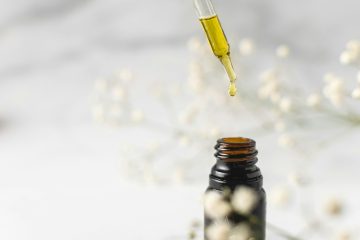CBD does not make your eyes red, and it has been proven that it can actually reduce eye redness. There are a few reasons that this is true. Some of the common reasons that this happens include THC, and also the blood vessel dilation that occurs in your eyes. You can get relief by taking fish oil or CBD-only edibles. These can help to reduce blood vessel dilation and reduce your redness.
THC causes red eyes
THC and CBD are two of the most prevalent cannabinoids in marijuana. But while THC and CBD may have similar effects, they do not act in the same way. They can even be opposites. For instance, THC is known to cause red eyes.
This is because it dilates the blood vessels in the eyes. It also helps in lowering intraocular pressure. While this sounds like a good thing, it also means that it’s not always the best solution.
There are many other factors that go into marijuana’s effects on the eyes, including genetics and overall health. These factors, along with the amount of THC or CBD that you ingest, may play a part.
However, the effects of marijuana on the eyes are mainly related to THC. You’ll find that high-THC cannabis strains tend to make your eyes red, while low-THC strains do not.
Aside from THC, there are other cannabinoids that are responsible for the redness in your eyes. Specifically, vasoconstrictors.
One of the more important cannabinoids to have is the molecule known as CBD. It is a cannabinoid that can help alleviate some of the other side effects of THC, such as memory loss. In addition, it has excellent pain-killing properties.
If you want to avoid red eyes from marijuana, you’ll need to find a product that is high in CBD. Alternatively, you could use a product with no THC at all.
Red eyes are not dangerous, but they can be uncomfortable and unsightly. Using over-the-counter eye drops and wearing sunglasses can help reduce the effects of weed.
The effects of consuming weed on your eyes vary greatly from one person to the next. That’s why it’s smart to plan your smoking sessions.
A cold wet towel or ice cubes can be used to cool down your eyes. Taking a quick nap can also help. Another good idea is to wash your face with cold water.
Ultimately, you’ll need to talk to your doctor if your red eyes continue to recur. Your red eyes might be the result of an eye infection, uveitis, or corneal ulcer.
CBD-only edibles reduce blood vessel dilation and reduce redness
If you suffer from red eyes, you may wonder if CBD-only edibles can help. Red eyes are caused by blood pressure rising, and the blood vessels in the eye dilate when the pressure decreases. Using CBD-only edibles can help temper this effect.
It’s important to note that this effect does not occur in everyone. There are different factors that affect the potential for redness, including your age, body size, gender, lifestyle, and genetics. Also, if you’re experiencing a long-term redness problem, choose low-THC strains.
Some studies suggest that high-CBD strains are less likely to cause redness. However, these benefits are not yet fully known.
You can use eye drops to control redness. Over-the-counter eye drops such as Visine or Refresh contain ingredients called vasoconstrictors, which constrict blood vessels to prevent redness. But you might need to use more than one eye drop to achieve results.
You can also try sunglasses to protect your sensitive skin and eyes. You can also stay hydrated, especially if you’re wearing contacts throughout the day. Lastly, you can plan your schedule to avoid redness.
The endocannabinoid system (ECS) is the regulatory system that controls the body’s homeostasis. It interacts with the endocannabinoid receptors in the brain and body, affecting things such as sleep, digestion, and stability.
CBD does not interact directly with cannabinoid receptors, but it does interact with other cannabinoid receptors and the endocannabinoid system. As a result, CBD provides the benefits of marijuana without the psychoactive effects of THC.
You can find many types of edibles, containing either THC or CBD. While THC-containing products can cause redness, they tend to be more potent and last longer than CBD-only edibles. That’s why it’s best to start with low-THC varieties.
In addition, you can also buy vasodilators that work to reduce redness. Depending on your dosage, these products can last for about four to twelve hours. Nevertheless, it’s important to consult with your doctor to make sure that the effects of these products are safe for you.
Red eyes are not a major concern, though they can be a sign of a more serious issue. If you are concerned about your redness, talk to your eye care provider.
Fish oil reduces eye redness
Fish oil is a good way to reduce redness in your eyes. It contains omega-3 fatty acids and antioxidants, which are helpful in a variety of ways. They also help the body produce eye-friendly oils.
Some research suggests that fish oil may improve the production of the oils needed to keep your eyes lubricated. In addition, it may help with inflammation and dryness. However, it may cause bleeding, so do your homework before adding it to your diet.
There is some evidence to suggest that the use of fish oil may also reduce the rate of abnormal heart rhythm deaths. If you have diabetes or other conditions that can lead to cardiovascular issues, you should speak to your doctor before adding any supplements to your routine.
Using a supplement is an easy and effective way to boost your intake of omega-3 fatty acids. The most important ones to look for are docosahexaenoic acid (DHA) and eicosapentaenoic acid (EPA). Aside from reducing inflammation, these fatty acids can also help you stay alert and focused.
You can find fish oil in liquid or capsule form. Make sure that the product you purchase is a reputable brand and is GOED certified. This is a standard that tests the purity of the oil.
Another good way to get the benefits of fish oil is by eating a well-balanced diet. Omega-3 fatty acids are found in a wide variety of foods. These include salmon, mackerel, and albacore tuna. Additionally, you can get them through other sources, such as low-fat yogurt, nuts, seeds, and dark green vegetables.
Taking fish oil in small amounts is also a good idea. Having a warm or cold compress on the affected area can also aid in blood circulation and soothe the irritated eye. Combined with eye drops, the combination of these can be extremely beneficial.
One of the most common causes of redness in the eyes is THC. While the drug has many health benefits, it can cause dry, itchy, and sometimes red eyes. To help prevent these problems, experts suggest taking a break from computer work, using goggles, and wearing wraparound sunglasses.
Give your eyes time to recover
If you are considering using CBD for your eyes, you need to be aware of the risks. There are a number of risks, including eye strain, memory problems, and addiction. You need to consult with your doctor and follow his or her recommendations.
There are a number of studies showing that CBD can be effective for other medical conditions, but not for glaucoma. In fact, some research suggests that it could actually make glaucoma worse.
For decades, marijuana has been associated with glaucoma. However, several states have legalized the use of medical marijuana, allowing some patients to access it as a treatment for their condition. While some forms of marijuana have been studied for their ability to treat glaucoma, more studies haven’t yet been conducted.
Medical marijuana has been shown to decrease pressure in the eyes for a short period of time, but the effect is only temporary. It’s important to keep a close eye on your eye pressure throughout the day. This is because fluctuations in pressure can damage the optic nerve. A recent study published in the journal Investigative Ophthalmology & Visual Science shows that the chemical in marijuana, THC, can reduce pressure in the eyes. But it needs to be taken in high doses to achieve similar effects.
Although the use of cannabinoids has been proven to be beneficial for age-related macular degeneration, there are a few other concerns. In addition to being a risk factor for addiction, THC can cause memory problems. Another problem with marijuana is that it’s commonly used as a recreational drug.
Some dispensaries have been promoting CBD for the eyes. These products are often marketed as an alternative to over-the-counter medications. CBD is mixed with a small amount of THC, the chemical responsible for getting people high.
If you’re considering using CBD for your eyes, you need advice from an ophthalmologist. He or she can advise you on the proper dosing, and can also guide you on how to avoid any disruptive side effects.
If you’re planning on using CBD for your eyes, you should start at a low and slow dosage, and then work your way up. Your ophthalmologist can provide you with advice on dosing, and he or she can help you determine how to avoid any harmful side effects.


